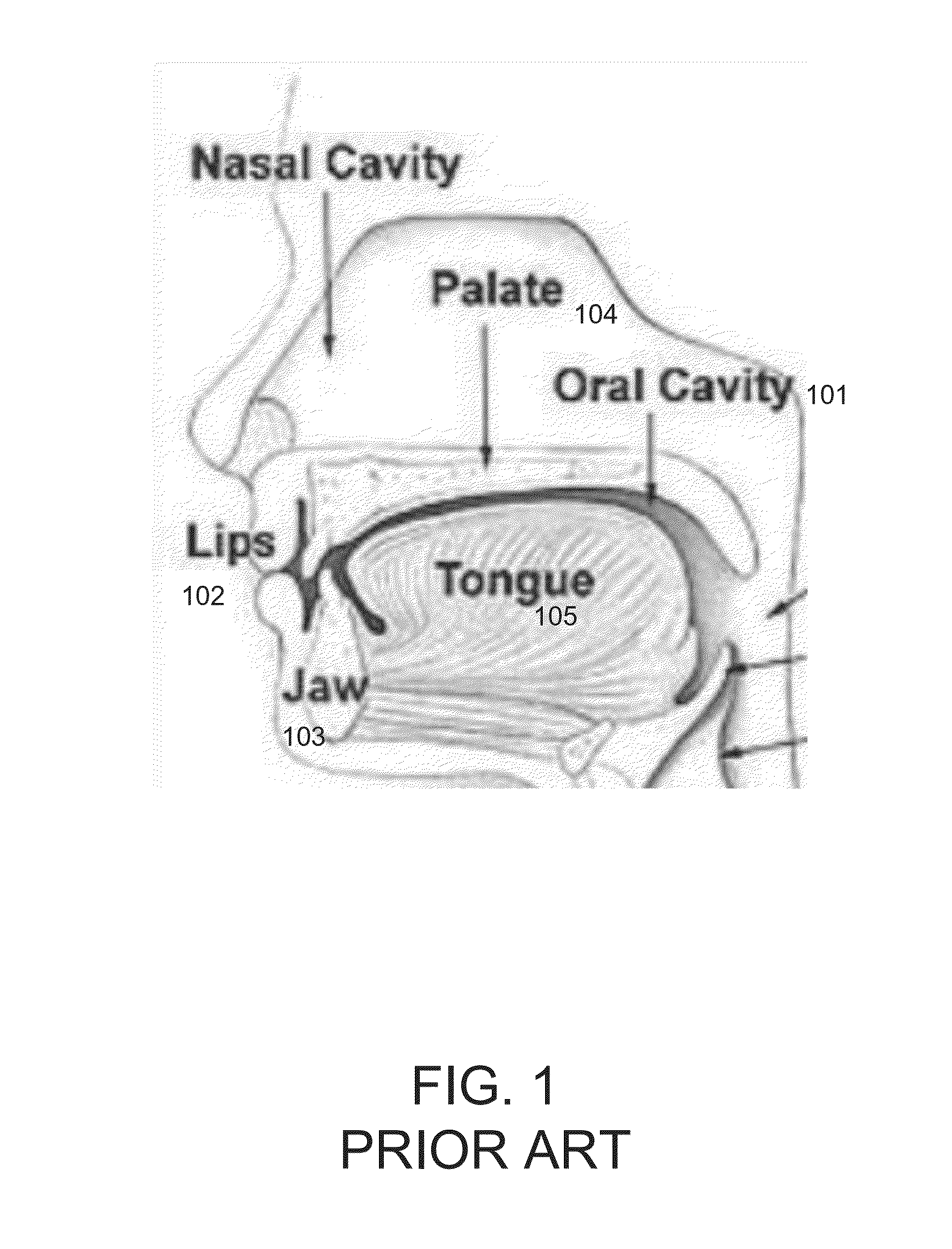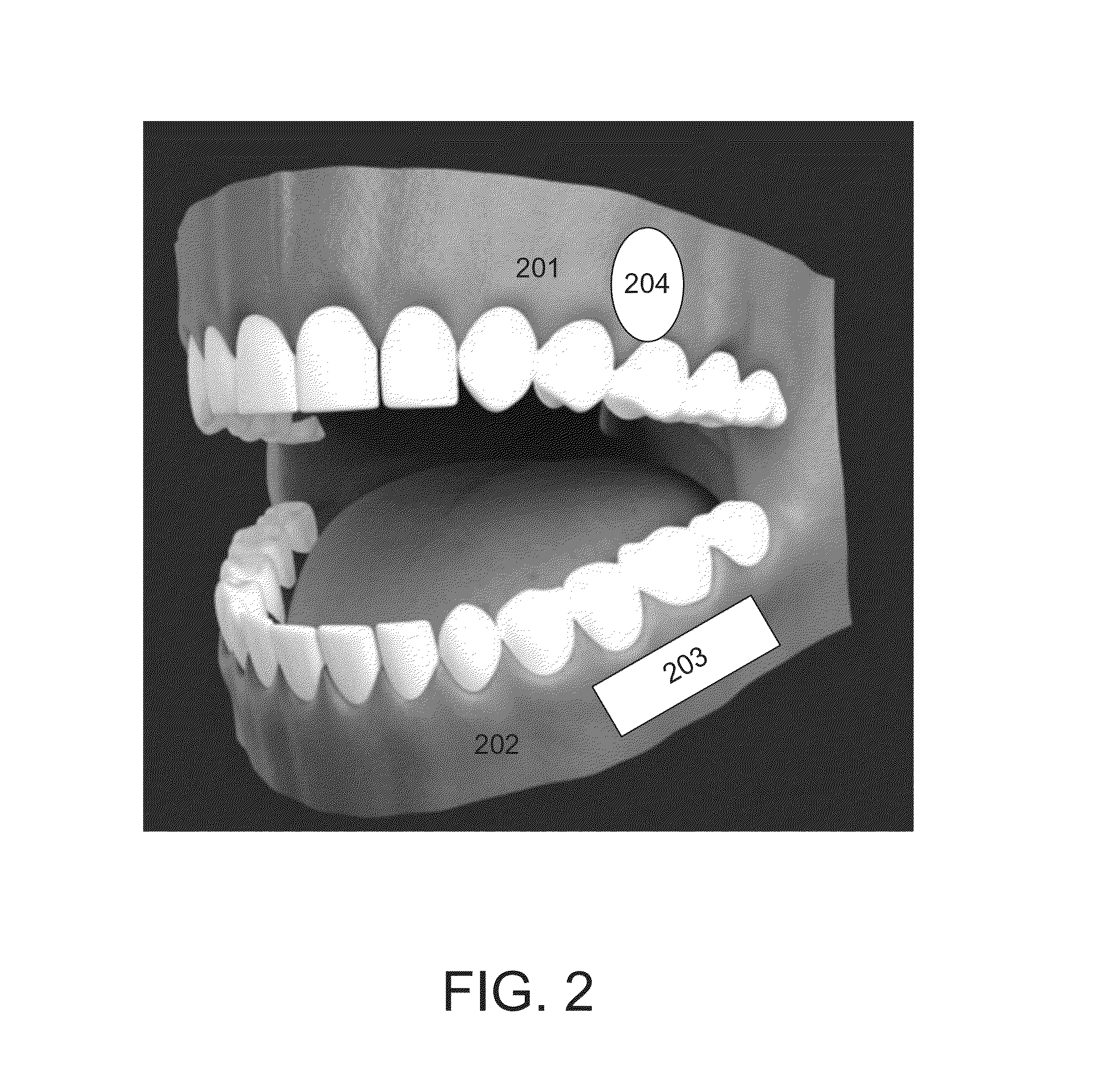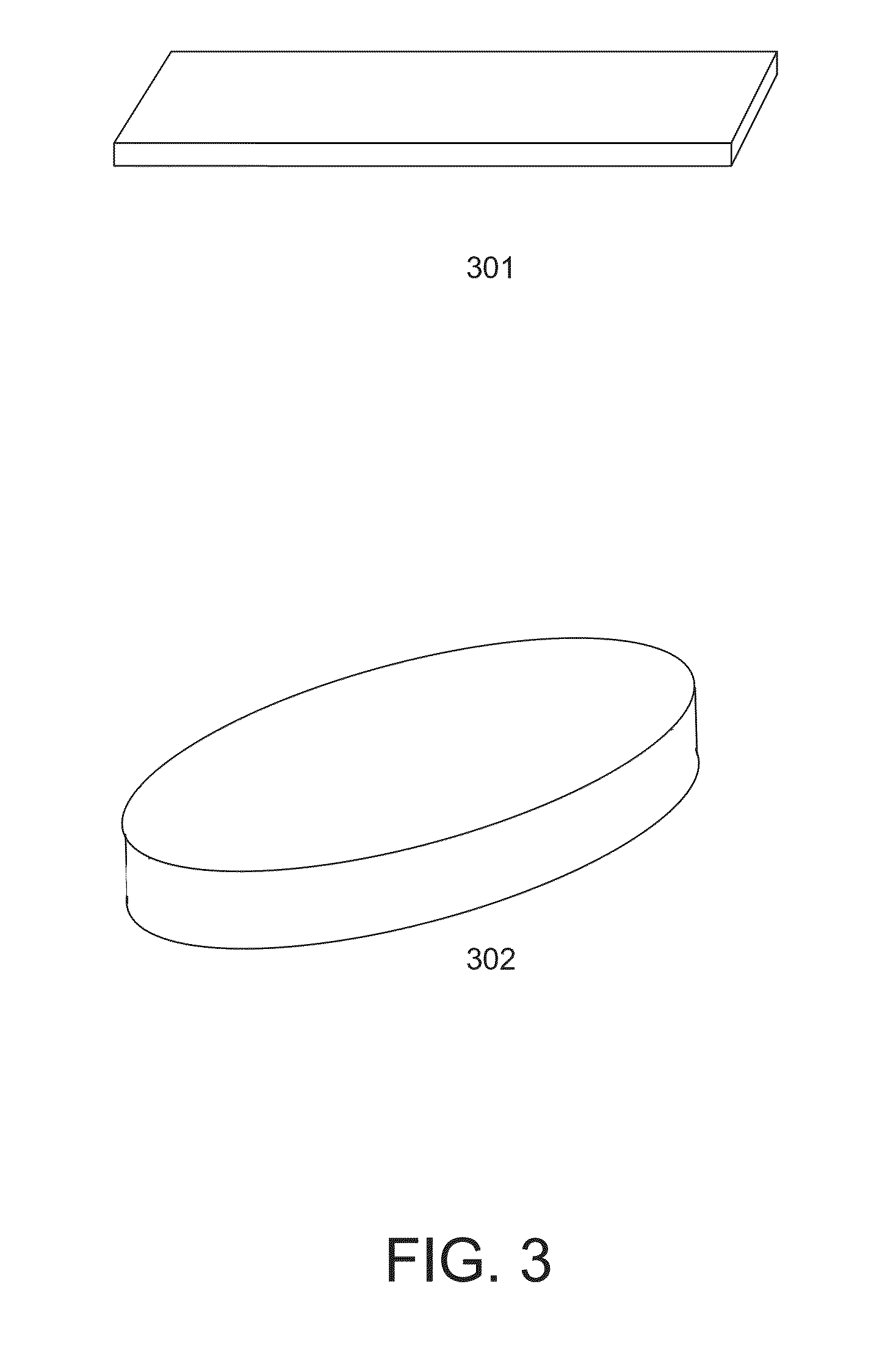Oral anesthesia application
- Summary
- Abstract
- Description
- Claims
- Application Information
AI Technical Summary
Benefits of technology
Problems solved by technology
Method used
Image
Examples
example 1
[0044]PURPOSE: The purpose of this investigation was to compare the pain responses of children during local anesthetic infiltration at bilateral palatal sites prepared with the topical application of benzocaine 20% oral adhesive (Orabase-B) versus benzocaine 20% gel (Hurricaine) or EMLA 5% oral adhesive (EMLA 5% cream in Orabase Plain).
[0045]METHODS: Forty subjects, aged 7-15 years old, received bilateral palatal injections following topical application of anesthetic agents applied in a randomized, crossover design. Pain responses were compared based upon subject self-report using a visual analogue scale (VAS), changes in the subject's heart rate, and operator assessment using a modified Children's Hospital of Eastern Ontario Pain Scale (CPS) that rated behavioral changes in children. Following the injections, the subjects were asked to choose which agent was preferred based on comfort and taste acceptance.
[0046]RESULTS: All the agents tested were equivalent in injection pain respon...
example 2
[0047]Clinical evaluation of MGI 209, an anesthetic, film-forming agent for relief from painful oral ulcers associated with chemotherapy.
[0048]LeVeque F G, Parzuchowski J B, Farinacci G C, Redding S W, Rodu B, Johnson J T, Ferretti G A, Eisenberg P D, Zimmer M B.
[0049]Harper Hospital, Detroit, Mich. 48201.
[0050]PURPOSE: This open-label, multicenter trial evaluated the efficacy of a muco-adherent, anesthetic medication (MGI 209) for relief from painful oral ulcers associated with cytotoxic chemotherapy.
[0051]PATIENTS AND METHODS: Twenty-eight eligible cancer patients who had up to five discrete oral ulcers (total area<or=5 cm2) completed this study. Mean age was 53.5 years (range, 21 to 81). Subjective assessments of oral discomfort before and after an orange juice pain challenge (OJPC), which was measured using a visual analog scale (VAS), and visual estimates of the amount of MGI 209 that remained on treated ulcers were collected at (1) baseline (before MGI 209 treatment); and (2) ...
PUM
| Property | Measurement | Unit |
|---|---|---|
| Area | aaaaa | aaaaa |
| Antimicrobial properties | aaaaa | aaaaa |
Abstract
Description
Claims
Application Information
 Login to View More
Login to View More - R&D
- Intellectual Property
- Life Sciences
- Materials
- Tech Scout
- Unparalleled Data Quality
- Higher Quality Content
- 60% Fewer Hallucinations
Browse by: Latest US Patents, China's latest patents, Technical Efficacy Thesaurus, Application Domain, Technology Topic, Popular Technical Reports.
© 2025 PatSnap. All rights reserved.Legal|Privacy policy|Modern Slavery Act Transparency Statement|Sitemap|About US| Contact US: help@patsnap.com



